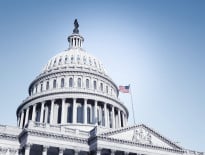When the next round of Paycheck Protection funding begins, lenders will have separate rules to follow based on whether a business owner received a PPP loan last year.
The U.S. Small Business Administration Wednesday night released two interim final rules regarding the latest round of PPP lending authorized by the COVID aid legislation Congress passed in December. In reviving the PPP, the legislation allows funding for both small business owners who did not participate last year and “second draw” loans for certain businesses that already received a loan and can demonstrate a revenue loss.
The PPP will close on Wednesday, March 31. The SBA did not say when it would open the lender portal for new applications, but when it does, most lenders will not have access right away.
In a memo titled “Guidance on Accessing Capital for Minority, Underserved, Veteran and Women-Owned Business Concerns,” the SBA said it would continue to address potential barriers that minority, underserved, veteran, and women-owned businesses have faced in accessing capital.
As part of this initiative, the SBA said only CDFIs would be able to submit applications in the PPP portal for “at least the first two days.”
Other steps the SBA is taking include directing borrower inquiries received through its Lender Match tool to small lenders that can assist underserved communities and matching small businesses through Lender Match with Certified Development Companies, Farm Credit System lenders, microloan intermediaries and traditional lenders with smaller asset sizes.
When the PPP does restart, lenders will go through a similar process as last year.
For first-time PPP loans, businesses can have no more than 500 employees, and the top loan amount is $10 million. The second draw loans will have different requirements.
Businesses looking to take a second loan can have no more than 300 employees, and the maximum loan amount is $2 million. These businesses also must demonstrate a 25 percent revenue reduction in 2020.
Lenders will have to verify the revenue reduction for second draw loans over $150,000.
“[T]he lender must confirm the dollar amount and percentage of the borrower’s revenue reduction by performing a good faith review, in a reasonable time, of the borrower’s calculations and supporting documents concerning the borrower’s revenue reduction,” the SBA said. “If the lender identifies errors in the borrower’s calculation or a material lack of substantiation in the borrower’s supporting documents, the lender should work with the borrower to remedy the issue.”
The SBA rule also said that businesses must have already used the funds it received for the first loan to be eligible for a second loan.
“[T]he borrower must have spent the full amount of its first draw PPP loan on eligible expenses under the PPP rules to be eligible for a second draw PPP Loan,” the SBA said. “This clarification will help ensure program integrity by preventing a borrower from receiving a second draw PPP loan if the borrower has not complied with PPP loan program requirements.”
For both first and second loans, businesses must have been in operation on Feb. 15, 2020. Seasonal businesses that operated for a 12-week period between Feb. 15, 2019, and Feb. 15, 2020, will be eligible as well for PPP loans.
The COVID legislation also allowed certain businesses to apply to increase the loan amount received in 2020, including seasonal employers and borrowers who returned all or part of a PPP loan.
The new rules let borrowers select the length of the coverage period, between eight and 24 weeks. Like last year, lenders must make a one-time, full disbursement of the PPP loan within 10 calendar days of when the loan is assigned a loan number by SBA. Borrowers must still use 60 percent of the loan amount for payroll costs.
The interim final rules also contain information about forgiveness, though the SBA said it plans to issue a consolidated rule governing all aspects of loan forgiveness and loan review, providing a single reference point for lenders and borrowers.








